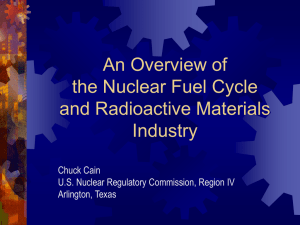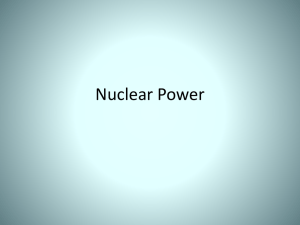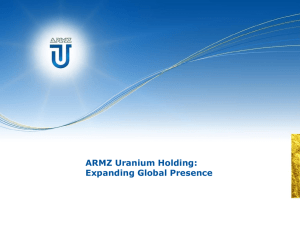Information Sheet, Form A, Form B, Form C Word
advertisement
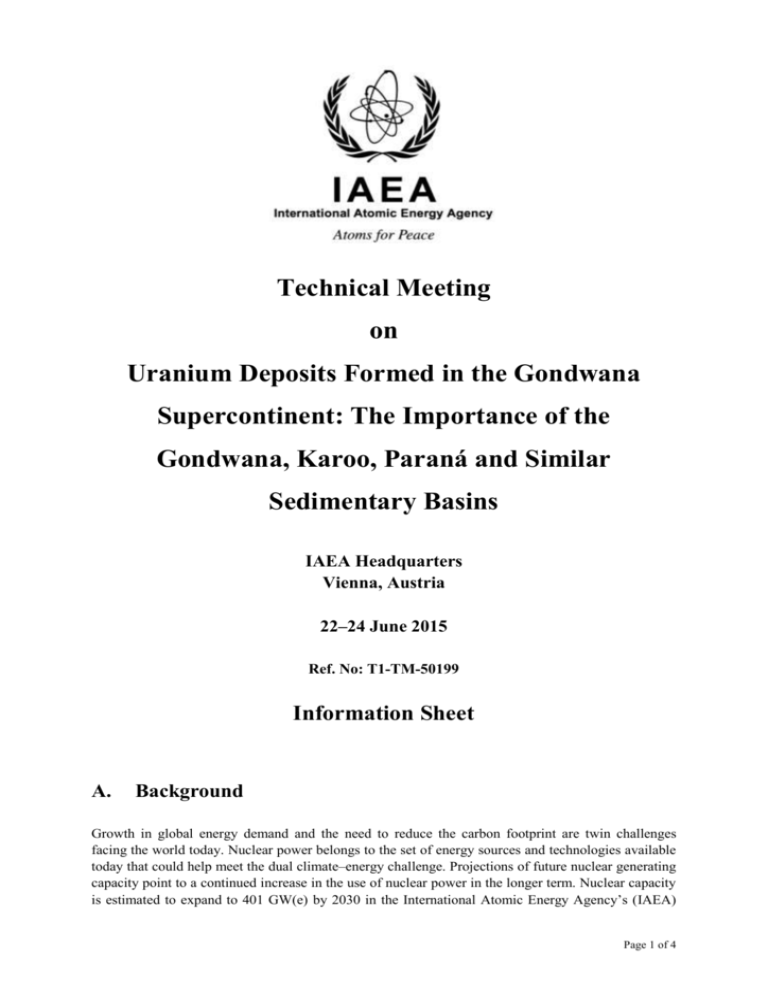
Technical Meeting on Uranium Deposits Formed in the Gondwana Supercontinent: The Importance of the Gondwana, Karoo, Paraná and Similar Sedimentary Basins IAEA Headquarters Vienna, Austria 22–24 June 2015 Ref. No: T1-TM-50199 Information Sheet A. Background Growth in global energy demand and the need to reduce the carbon footprint are twin challenges facing the world today. Nuclear power belongs to the set of energy sources and technologies available today that could help meet the dual climate–energy challenge. Projections of future nuclear generating capacity point to a continued increase in the use of nuclear power in the longer term. Nuclear capacity is estimated to expand to 401 GW(e) by 2030 in the International Atomic Energy Agency’s (IAEA) Page 1 of 4 low projection and to 699 GW(e) in its high projection, and to reach 413 GW(e) by 2050 in the IAEA’s low projection and 1092 GW(e) in its high projection. As the global uranium demand is expected to grow, in consonance with the nuclear growth expected worldwide, there is a need to identify additional resources of uranium. Uranium resources associated with the Gondwana supercontinent, which existed approximately 510 to 180 million years ago, are to be found on many of the land masses into which the supercontinent broke up, including Antarctica, South America, Africa, Madagascar, the Arabian Peninsula, the Indian sub-continent and the Australian continent. Large continental sedimentary basins existed between the Carboniferous and Jurassic geological periods (360–180 million years), which are now important sources of coal and petroleum as well as uranium. These sedimentary basins are variously called Gondwana in Asia– Australia, Karoo in Africa, and Paraná in South America, but are also known by other names in different geographical settings. The break-up of Gondwana approximately 185 to 100 million years ago effectively ended this vast sedimentation episode, which was punctuated by a regional basalt flooding event. Uranium mineralization is widely recognized in the basement rocks of the Gondwana sediments, such as Precambrian granites, metamorphic rocks, peralkaline complexes and carbonatites. These basement rocks as well as the intermittent volcanism in the basin and surroundings are seen as the initial source of uranium. Sandstone, coal–lignite and surficial type uranium deposits are economically significant and are well-known in Africa, Asia, Australia and South America. Many sizable deposits are known in the four continents, of which some actually contribute to uranium production today, especially in Africa. Formation of the sedimentary basins and the nature of the sediments and of the organic matter they contain are important points to consider in the economic mineralization of uranium. However, emphasis should also be placed on the basement geology and igneous activity within the basins, which has contributed to mineralization both within and outside the basins. Basement and basin tectonics, understood in an integrated manner, can throw more light on the complex set of factors and their interplay that led to the origin of coal, petroleum and uranium accumulation in these surficial and deep continental settings, thus creating some of the well-known ‘energy basins’. Of particular interest will be the associated metallogenic associations such as that recorded for vanadium and copper. The genesis of uranium mineralization within the basin has been viewed as a strong driving factor in the break-up of Gondwana, triggered by extensive magmatic activity and extensive hydrothermal systems. B. Objectives and Target Audience The purpose of the meeting is to provide a forum for experts from Member States to discuss recent advances in understanding the nature and origin of uranium deposits in the Gondwana supercontinent, and using this insight in exploration programmes for identifying new resources. Recent case histories and studies on the geology, exploration, mining and processing of uranium deposits associated with Gondwana and similar sedimentary basins, including crystalline basement rock, sandstone, coal-lignite and surficial type deposits, will be discussed. The target participants of the meeting are professionals engaged in uranium geology and exploration, resource evaluation and production, researchers, energy planners and officials interested in uranium resources from Member States. Page 2 of 4 C. Topics of the Meeting The following specific topics have been identified as being of particular interest, and will be considered in the papers to be presented: D. o Geological setting and controls of economic uranium mineralization in the Gondwana supercontinent; o Origin and nature of varying styles of uranium mineralization — magmatic, sandstone, coal-lignite and surficial — during the Gondwana period; o Uranium association with energetic materials — coal and petroleum; o Aspects of metallogenic associations during the Gondwana period; o Exploration criteria for varying styles of mineralization associated with Gondwana sediments and the basement; o Mining of uranium deposits associated with Gondwana and similar sedimentary basins; o Processing issues for uranium and associated commodities; o Exploration, mining and processing case histories for uranium deposits; and o Socio-economic and environmental issues in production from uranium deposits formed in the Gondwana supercontinent. Working Language The working language of the meeting will be English, with no interpretation provided. All communications, abstracts and papers must be submitted in English. E. Venue The meeting will commence on Monday, 22 June 2015, at 9.30 a.m. in Board Room A of the Vienna International Centre (VIC). Meeting participants are requested to arrive at Checkpoint 1/Gate 1 of the VIC one hour before the start of the meeting on the first day, in order to allow sufficient time for the issuing of grounds passes, which are necessary for official visitors to the VIC. F. Visas Participants who need a visa for entering Austria should submit the necessary application to the nearest diplomatic or consular representative of Austria as early as possible. Page 3 of 4 G. Organization The meeting will be chaired by: Mr Michel Cuney Director of Research CNRS Emeritus CREGU & UMR GEORESSOURCES Domaine Scientifique Victor Grignard - Entrée 3B BP 70 239 - F54 506 VANDOEUVRE les NANCY Cedex, France Phone: 33-(0)3 83 68 47 09 Fax: 33-(0)3 83 68 47 01 Email: michel.cuney@univ-lorraine.fr Official correspondence with regard to the technical aspects of the meeting should be addressed to the Scientific Secretary: Mr Harikrishnan Tulsidas Nuclear Fuel Cycle and Materials Section Division of Nuclear Fuel Cycle and Waste Technology Department of Nuclear Energy Vienna International Centre PO Box 100 1400 VIENNA AUSTRIA Tel.: +43 1 2600 22758 Fax: +43 1 26007 Email: H.Tulsidas@iaea.org Official correspondence with regard to administrative issues should be addressed to the Administrative Secretary: Ms Tamila Beridze Nuclear Fuel Cycle and Materials Section Division of Nuclear Fuel Cycle and Waste Technology Department of Nuclear Energy Vienna International Centre PO Box 100 1400 VIENNA AUSTRIA Tel.: +43 1 2600 25809 Fax: +43 1 26007 Email: T.Beridze@iaea.org Page 4 of 4


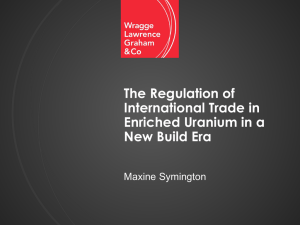

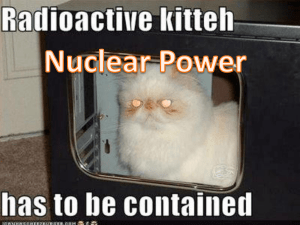
![Olli Heinonen`s technical presentation [PPT].](http://s2.studylib.net/store/data/005572080_1-b7e6fdb5a9b814ad694589987ab2c05e-300x300.png)
